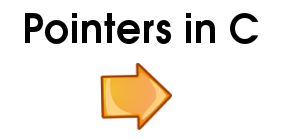 9. Is NULL always equal to 0(zero)?
9. Is NULL always equal to 0(zero)?
The answer depends on what you mean by “equal to.” If you mean “compares equal to,” such as
if ( /* … */ )
{
p = NULL;
}
else
{
p = /* something else */;
}
/* … */
if ( p == 0 )
then yes, NULL is always equal to 0. That’s the whole point of the definition of a null pointer.
If you mean “is stored the same way as an integer zero,” the answer is no, not necessarily. That’s the most common way to store a null pointer. On some machines, a different representation is used.
10. What does it mean when a pointer is used in an if statement?
Any time a pointer is used as a condition, it means “Is this a non-null pointer?” A pointer can be used in an if,while, for, or do/while statement, or in a conditional expression. It sounds a little complicated, but it’s not.
Take this simple case:
if ( p )
{
/* do something */
}
else
{
/* do something else */
}
An if statement does the “then” (first) part when its expression compares unequal to zero. That is,
if ( /* something */ )
is always exactly the same as this:
if ( /* something */ != 0 )
That means the previous simple example is the same thing as this:
if ( p != 0 )
{
/* do something (not a null pointer) */
}
else
{
/* do something else (a null pointer) */
}
11. Can you add pointers together? Why would you?
No, you can’t add pointers together. If you live at 1332 Lakeview Drive, and your neighbor lives at 1364 Lakeview, what’s 1332+1364? It’s a number, but it doesn’t mean anything. If you try to perform this type of calculation with pointers in a C program, your compiler will complain.
The only time the addition of pointers might come up is if you try to add a pointer and the difference of two pointers:
p = p + p2 – p1;
which is the same thing as this:
p = (p + p2) – p1.
Here’s a correct way of saying this:
p = p + ( p2 – p1 );
Or even better in this case would be this example:
p += p2 – p1;
12. How do you use a pointer to a function?
The hardest part about using a pointer-to-function is declaring it. Consider an example. You want to create a pointer, pf, that points to the strcmp() function. The strcmp() function is declared in this way:
int strcmp( const char *, const char * )
To set up pf to point to the strcmp() function, you want a declaration that looks just like the strcmp()function’s declaration, but that has *pf rather than strcmp:
int (*pf)( const char *, const char * );
Notice that you need to put parentheses around *pf. If you don’t include parentheses, as in
int *pf( const char *, const char * ); /* wrong */
you’ll get the same thing as this:
(int *) pf( const char *, const char * ); /* wrong */
That is, you’ll have a declaration of a function that returns int*.
After you’ve gotten the declaration of pf, you can #include <string.h> and assign the address of strcmp()to pf:
pf = strcmp;
or
pf = & strcmp; /* redundant & */
You don’t need to go indirect on pf to call it:
if ( pf( str1, str2 ) > 0 ) /* … */